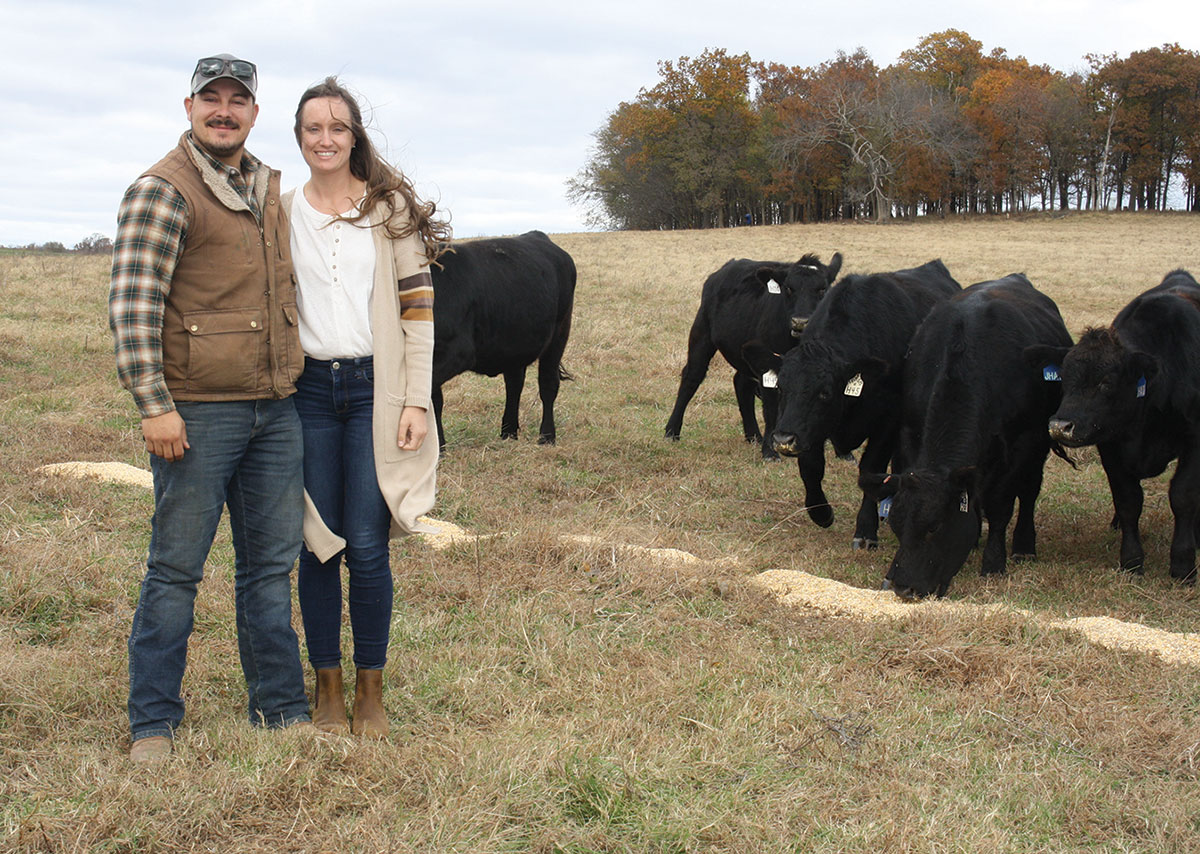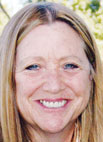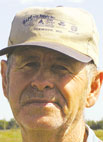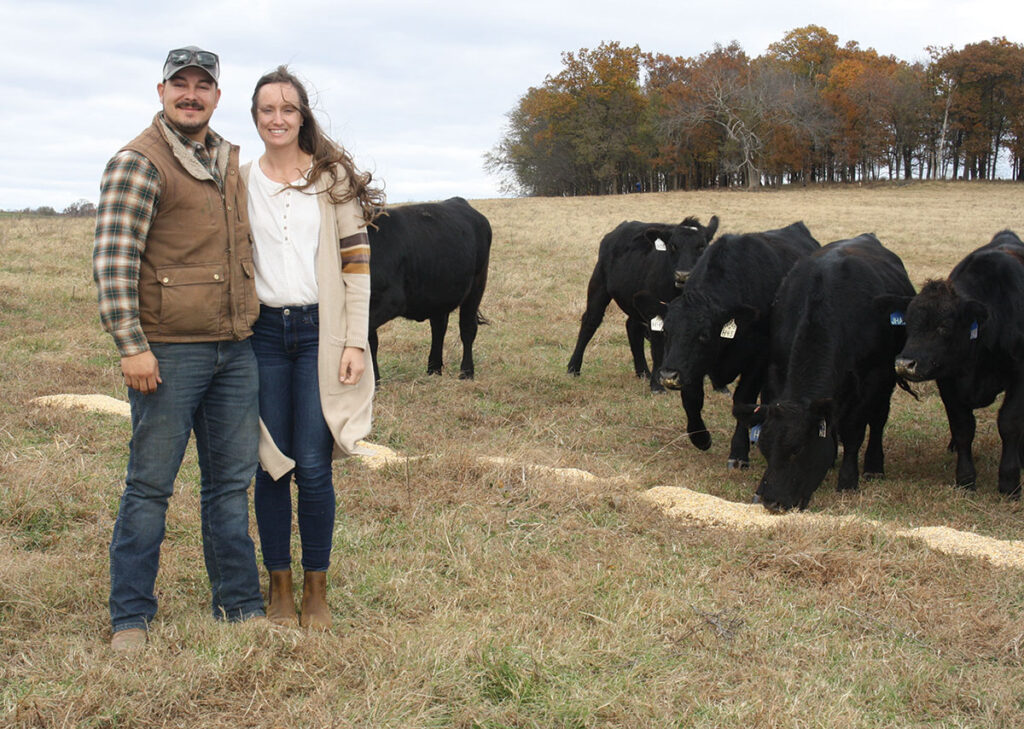
After generations in the cattle business, JRC Cattle Company is moving to a registered herd
FAIR PLAY, MO. – Raising cattle is a part of the Clemons family DNA. John Clemons II is a sixth-generation cattleman near Fair Play, Mo., just inside Cedar County. He, however, is doing things a little differently than previous generations.
“We used to be strictly commercial,” John explained of the operation at JRC Cattle Company, which he owns with his father John Clemons. “The last few years, we have started to go more to the registered side with our Simmental and some Angus. We’re getting a little less in numbers but higher in quality. We’re slowly going that way; it just takes some time.”
“Six or seven years ago, we started with about 50 registered (Simmental) cows, and we are primarily registered now. We maybe have 100 commercial cows within our herd out of about 500 cow/calf pairs,” John’s wife Lachelle said.
Over the last three years, any retained animal eligible to be registered is.
“We are just slowly building in that direction,” Lachelle said. “Eighty to ninety percent of the herd is registrable, but it is a little overwhelming to go back and register those. I want to get into the total herd registration with the Simmental Association. It’s not just (John) and I. It’s his dad, the kids, and we all work a lot together.”
AI is a big part of the ranch’s breeding program, giving their herd additional genetic diversity. All first- and second-calf heifers are bred via AI and are a portion of the mature herd.
“We try to AI the cows from our original registered herd if we can. Sometimes it doesn’t work out because we don’t have any facilities there, so we have to truck them in and truck them back. There have been years where we have AI’ed 300 head,” Lachelle explained. “At this point, we feel like with our cows, if we bring in a high-quality bull, we are going to be happy with the results we are getting. In the past, we weren’t getting that, so we had to AI to bring in those genetics. We’ve got 400 head that we are really proud of, and some of the others are hard to get rid of.”
Among those hard-to-part-with animals are those from John’s late grandfather’s herd and senior cows that continue to raise a high-quality calf.
Retained heifers are closely evaluated. They consider the dam, sire, daily rate of gain and structure.
“We start with the feet, the legs, go to the udder and how she looks overall,” John said. “Once she has developed, the vet comes out and we to a track and pelvic score, usually at about 12 to 13 months, and we start breeding at about 14 months. If she can’t have an 80-pound calf, she doesn’t stay. The moderate calf is OK, but if you have a calf hit the ground at 80 instead of 50 pounds, he usually has a better start and grow better.”
If a heifer skips a breeding cycle, she is not given a second chance, which is why females with high-fertility traits are important to the JRC operation.
Seedstock is occasionally purchased, mostly from Montana.
“Those cattle work pretty well here,” John said. “Cattle that have a lot of intake, like cattle coming from the Plains area – Montana, North and South Dakota – do better where there is a lot of forage. Cattle that we’ve gotten from Oklahoma, Texas just don’t adapt well to the fescue.”
In addition to improving the herd, JRC Cattle Company improved pastures and forages by implementing a rotational grazing system about 10 years ago under the direction of the senior John Clemons advantage of programs from the USDA, such as EQUIP for cross fencing.
“We built a lot of cross fences,” John II said. “Today, I think the biggest field we have is a 40; everything else is down to a 20 or smaller. We rotate every day or every other day, depending on the number of cows. You can see the improvement (in pastures). If someone hasn’t been to a grazing school, I encourage it. We want to say we are in the beef industry, but we are grass farmers first and foremost.”
The herd receives an ADM’s Endo-Fight mineral and supplements that contain garlic, and about 30 percent of the farm’s Kentucky 31 fescue has been killed out and replaced with endophyte-friendly fescue.
Because of the implementation of the grazing program, the family say they have improved pasturer, and extended grazing days.
“You can tell the difference,” John said. “Not pulling the cows fast enough, you can tell you have grazed it too short. There are a few fields we have stripped grazed because it got too tall and rank. The grass has to work for you.”
“If they overeat a pasture, it takes twice as long for the grass to grow back,” Lachelle said, adding that the quality of cattle has improved, and they have a constant fat cover. “Cattle in good condition breed easier and keep things together.”
The family does not grow their own hay, opting to buy hay locally.
“When we feed hay that we’ve bought, we are feeding other people’s fertilizer that breaks down and goes back into our soil,” John said. “It’s been two, three years since we’ve taken any hay off.”
In the winter months, cattle receive hay, and the Nebraska-manufactured PowerCube, which John said, is 30 percent protein and 15 percent fat.
“Last year was the first year we did that,” John said. “We give 4 pounds per day, per head and give half ration on hay, and they stay fat all winter.”
Lachelle added the cost is higher than traditional cube per ton, but the herd receives fewer pounds per day. The addition of the specialized cubes has allowed the Clemons operation to reduce the hay needed to get their herd through the winter months.
In addition to building their herd, John and Lachelle hope to take their genetics to others.
“When we started with the registered side, we had locals who would come and buy bulls pretty much off the cow,” John said. “Calves were 90-days weaned, and the buyers were happy. Then we started keeping them a little longer and getting them a little bigger. Last spring, we sent seven bulls to the cow sale at Wheeler (Livestock Auction) and averaged close to $3,000 a head.”
“We were very pleased with that sale, so we thought we would try again, and this fall, they averaged about the same,” Lachelle added. “We have been marketing a little on social media and getting people who will buy right off the farm. We also get those repeat customers we sold to before sending bulls anywhere else. We thought we would start small and save a few back for ourselves, but we don’t need 15 bulls a year.”
For a bull to be a future herd sire, the performance and longevity of the animal’s sire is taken into consideration.
“We had a bull from Montana that stayed here for eight years,” John said. “If he can stay here for eight years, I’m going to look at his son. You have to see how they do on fescue and even their hair coat. There are a lot of factors that play into it.”
“We also look at docility,” Lachelle said. “We also look at the physique, pull their birth weights, look average daily gain, the sire and dam. If it’s a strong sire we’ve had good luck with in the past, we are going to look at him. If he has a strong birth weight, we will look at him. If he had a 70-pound birth weight, the likely hood of us keeping him is pretty small. We tell people we like bigger calves and that we breed for pounds, so we’re a little different than others, and that’s why we use Simmental.”
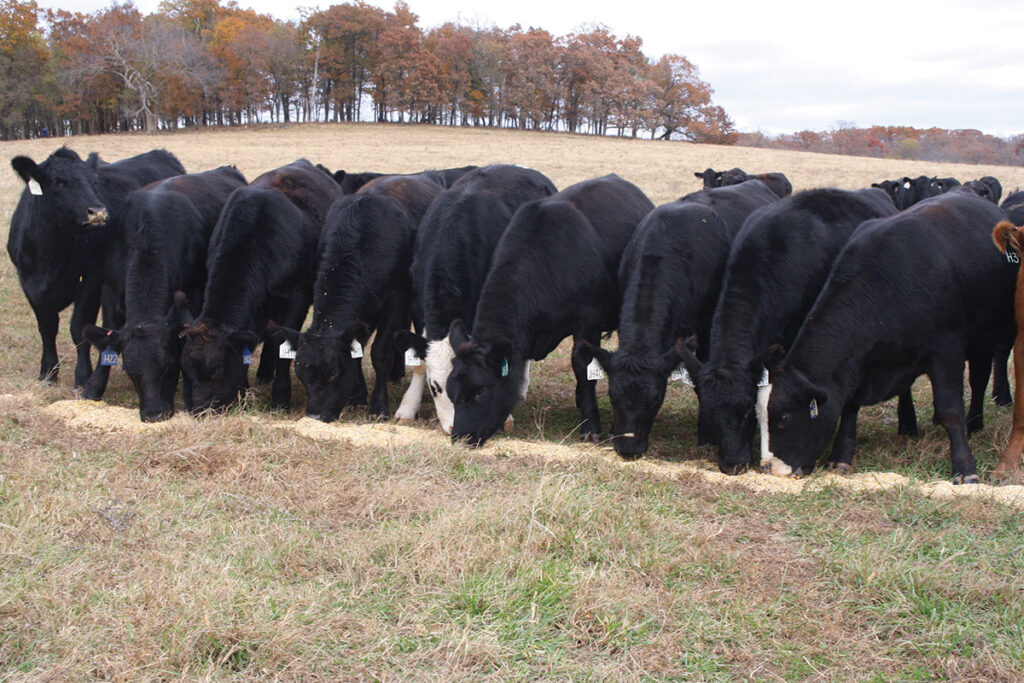
Animals not making the grade for bull prospects are castrated about 30 days after weaning.
With their entrance into the bull markets, the Clemons family has begun to explore areas beyond EPDs.
“I know so many seedstock guys who are moving toward genomic testing and putting (DNA) in their sale catalog,” John said. “My father talked about doing some DNA testing on some heifers and seeing where they are at compared to what they are out of.”
“It’s the future of our industry,” Lachelle added. “We have to always look at what’s coming from those people who are buying those bulls and heifers.”
As cattle producers, John added, if they were not progressive in meeting the demands of other producers, they were already behind.
“It doesn’t happen overnight,” he said. “It takes three to four years to change anything. It’s a long process, so you have to be planning all the time.”
They have discussed moving into the bred heifer market, but just like building a herd, it’s a slow process.
“Just one thing at a time,” John said with a smile.
“Sometimes we get ahead of ourselves, so we need to stop and really evaluate things for the future,” Lachelle, a former special education teacher turned full-time cattle producer, said.
As they move toward their seedstock production goals, John and Lachelle continue to breed their herd for pounds, not just seedstock.
“We tend to go big around here,” John said. “We like big, powerful cows. You want something that will grow and put some muscle in, and since we’ve been putting that Simmental onto our Angus, we are getting that hybrid vigor. They were just commercial Angus, but you could tell the difference. I like the half-bloods, and pounds and muscle. It’s everyone’s own niche. I like the marbling from the Angus and the pounds from the Simmental; it’s a well-balanced animal.”
For the last seven years, the same buyer in Illinois has purchased the Clemons’ calves, which are shipped 45 days after weaning and two rounds of vaccinations.
“He buys twice a year, and he sends them on,” John explained. “He lets us know how they are doing, and he said not to change our program because they are grading too good to change. His best year off our calves graded 28 percent Prime.”
John and Lachelle’s children — Lexi (11), J.R. (9) and Micah (6) — are the seventh generation of the Clemons family, and they are following the path laid out by the generations that came before them.
“We are an all-hands on deck kind of family,” Lachelle said. “Lexi is our main cowy kid. Micah is all about horses, and J.R. is the best at helping.”
Both John and Lachelle give tremendous credit to the senior John Clemens for decades of work in the walnut logging business that has allowed them to grow the operation to more than 1,500 acres and become full-time producers. Lachelle said she and John have worked to make the farm as sustainable as possible, which will help it continue in the future.

